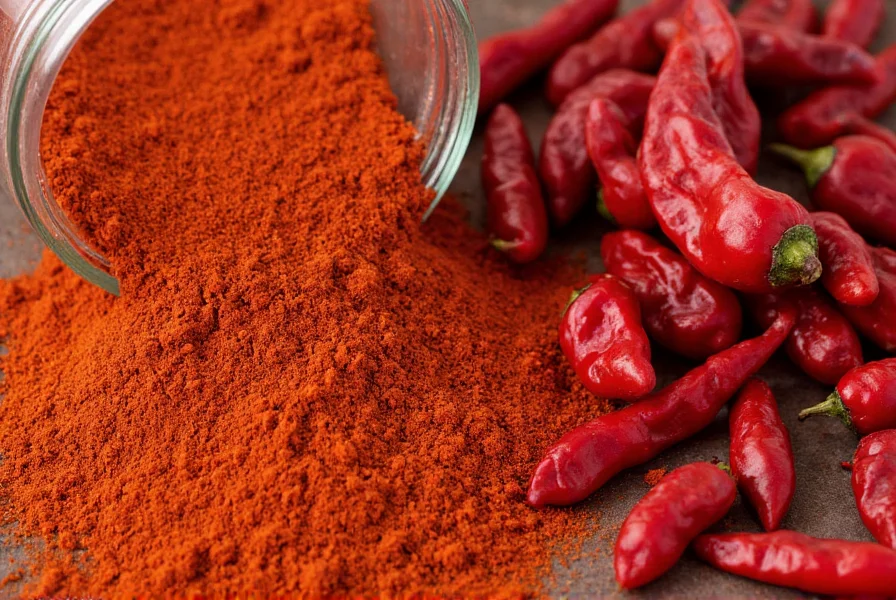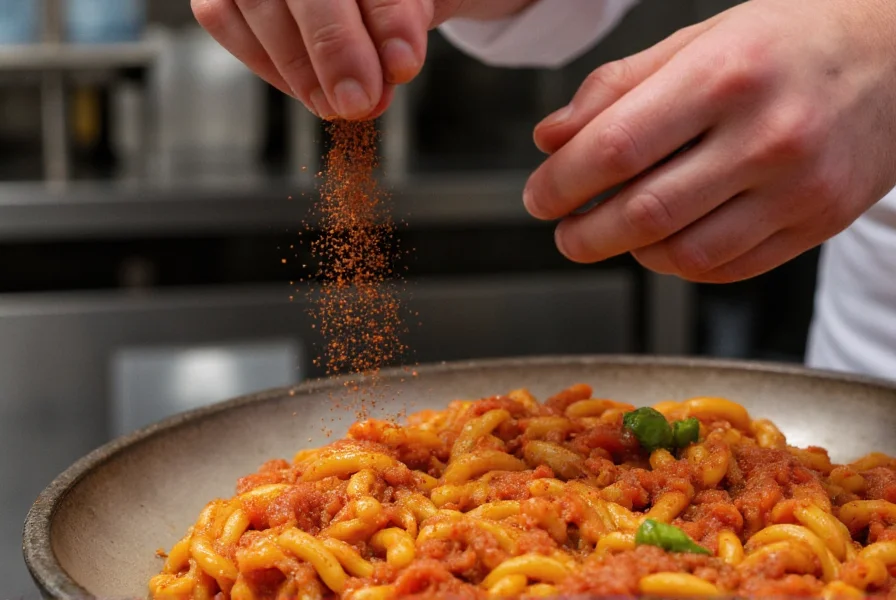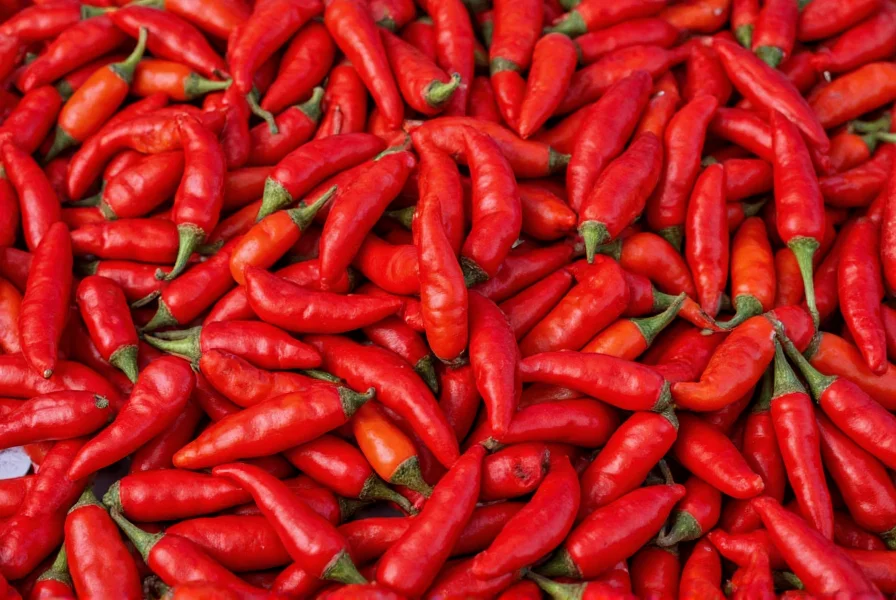Understanding what ground red pepper is and how to use it properly can transform your cooking. Unlike fresh peppers, this dried spice offers consistent flavor and extended shelf life while delivering the characteristic pepper taste that enhances countless recipes across global cuisines.
What Exactly Is Ground Red Pepper?
Ground red pepper refers to any dried, pulverized red chili pepper. While the term sometimes causes confusion with cayenne pepper, it actually encompasses several varieties of red peppers from the Capsicum annuum species. The specific heat level depends on which red peppers were used—ranging from mild bell peppers (though uncommon for "red pepper" labeling) to moderately hot cayenne varieties.
The drying process concentrates flavors and capsaicin (the compound responsible for heat), making ground red pepper more potent by volume than its fresh counterpart. Properly stored in an airtight container away from light and heat, it maintains optimal flavor for 2-3 years, though peak freshness occurs within the first year.
Ground Red Pepper vs. Similar Spices: Clearing the Confusion
Many home cooks struggle with the differences between ground red pepper, cayenne, and paprika. This comparison table clarifies these commonly confused spices:
| Spice | Heat Level (Scoville) | Flavor Profile | Common Uses |
|---|---|---|---|
| Ground Red Pepper | 500-30,000 SHU | Bright, earthy, variable heat | General seasoning, dry rubs, soups |
| Cayenne Pepper | 30,000-50,000 SHU | Sharp, intense heat | Hot sauces, Cajun/Creole dishes |
| Sweet Paprika | 0-500 SHU | Sweet, earthy, no heat | Coloring dishes, Hungarian cuisine |
| Hot Paprika | 500-10,000 SHU | Smoky with moderate heat | Spanish dishes, chorizo seasoning |
Understanding these differences helps prevent recipe disasters. When a recipe calls for ground red pepper substitutes, knowing which alternative matches both flavor and heat profile becomes essential.
Flavor Profile and Heat Variations
The heat level in ground red pepper varies significantly based on the specific pepper variety used. Common sources include:
- Ancho peppers (mild, 1,000-2,000 SHU): Smoky, slightly sweet with raisin-like notes
- Guajillo peppers (mild-medium, 2,500-5,000 SHU): Tangy, berry-like flavor
- Cayenne varieties (hot, 30,000-50,000 SHU): Sharp, immediate heat
- Crushed red pepper flakes (variable): Often includes multiple pepper types
When shopping, check labels for specific pepper varieties rather than relying solely on "ground red pepper" which lacks standardization. Specialty stores often provide more precise labeling than generic supermarket brands.

Practical Culinary Applications
Mastering how to use ground red pepper in cooking elevates dishes without overwhelming them. Unlike fresh peppers, ground versions distribute flavor evenly throughout dishes. Consider these professional techniques:
- Dry rubs: Combine with salt, garlic powder, and cumin for meats (use 1-2 tsp per pound)
- Finishing spice: Sprinkle lightly over finished dishes like pizza or pasta for fresh heat
- Infused oils: Steep in warm olive oil for 24 hours, then strain for pepper-flavored oil
- Baking applications: Add to chocolate desserts for subtle warmth (¼ tsp per recipe)
For soups and stews, add ground red pepper early in cooking to mellow the heat and integrate flavors. In contrast, for dishes like scrambled eggs or finished sauces, add it near the end for brighter, more pronounced pepper flavor.
Optimal Storage Methods
Preserving ground red pepper freshness requires proper storage. Light, heat, and oxygen degrade flavor compounds and capsaicin over time. Follow these storage guidelines:
- Store in airtight glass or metal containers (not plastic which can absorb odors)
- Keep in a cool, dark cupboard away from the stove or oven
- Never store above 70°F (21°C) to prevent flavor degradation
- Check freshness by aroma—fresh ground pepper has a vibrant, sharp scent
Ground spices lose potency faster than whole peppers. Test your ground red pepper by mixing a small amount with warm water—if the heat and flavor are barely detectable, it's time to replace it.
Effective Substitution Strategies
When you need ground red pepper substitutes, consider both heat level and flavor profile. The best alternatives include:
- For mild recipes: Sweet paprika (1:1 ratio) plus a pinch of cayenne for heat
- For medium heat: Hot paprika (use 1.5x amount as ground red pepper)
- For high heat applications: Cayenne pepper (use ½ amount as it's significantly hotter)
- For smoky flavor: Chipotle powder (use ¾ amount with additional salt)
When substituting, always start with less than you think you need—you can add more heat, but you can't remove it once incorporated. Taste as you go, especially when using hotter alternatives like cayenne.

Nutritional Profile and Potential Benefits
While primarily used for flavor, ground red pepper offers some ground red pepper health benefits. Capsaicin, the compound responsible for heat, has been studied for potential effects including:
- Moderate metabolism boost (approximately 50 extra calories burned daily)
- Temporary pain relief through topical application
- Rich in vitamin A (from carotenoids in red peppers)
- Contains antioxidants like vitamin C and flavonoids
One teaspoon (2g) of ground red pepper typically contains:
- 6 calories
- 13% of daily vitamin A needs
- 6% of daily vitamin E needs
- Trace amounts of iron and potassium
While these benefits exist, ground red pepper should be considered a flavor enhancer rather than a significant nutritional source due to the small quantities typically used in cooking.
Common Questions About Ground Red Pepper
Is ground red pepper the same as cayenne pepper?
No, ground red pepper is not the same as cayenne pepper, though cayenne is one type of ground red pepper. Ground red pepper refers to any dried, ground red chili pepper, which could include ancho, guajillo, or other varieties. Cayenne specifically comes from cayenne peppers and is significantly hotter (30,000-50,000 Scoville units) than many other ground red peppers. When substituting, use about half as much cayenne as ground red pepper to avoid making dishes too spicy.
Can I substitute paprika for ground red pepper?
Yes, but with important distinctions. Sweet paprika makes an excellent substitute for mild ground red pepper but lacks heat. For recipes requiring heat, use hot paprika instead, though you may need 1.5 times the amount of ground red pepper called for. Remember that paprika generally has a sweeter, less complex flavor profile than many ground red peppers, so the final dish will have a slightly different taste. For best results in savory dishes, combine sweet paprika with a small amount of cayenne to match both color and heat level.
How can I tell if my ground red pepper has gone bad?
Ground red pepper doesn't spoil in the traditional sense but loses potency over time. Signs your spice has degraded include: faded color (should be vibrant red, not dull brown), weak aroma (fresh ground pepper has a sharp, distinctive scent), and diminished heat/flavor when tasted. Properly stored in an airtight container away from light and heat, ground red pepper maintains peak quality for 1-2 years. To test freshness, mix ¼ teaspoon with warm water—if the heat and flavor are barely detectable, it's time to replace it.
What's the difference between ground red pepper and crushed red pepper?
Ground red pepper is a fine powder created by grinding dried red peppers, while crushed red pepper consists of coarsely broken pieces of dried red peppers (often including seeds and membranes). Ground red pepper integrates seamlessly into sauces and dry rubs, distributing flavor evenly. Crushed red pepper provides visible flecks and more intense, localized heat pockets. In recipes, you can generally substitute ½ teaspoon ground red pepper for 1 teaspoon crushed red pepper, but the texture and heat distribution will differ. Crushed red pepper also tends to have a slightly fresher flavor as it degrades more slowly than finely ground versions.











 浙公网安备
33010002000092号
浙公网安备
33010002000092号 浙B2-20120091-4
浙B2-20120091-4